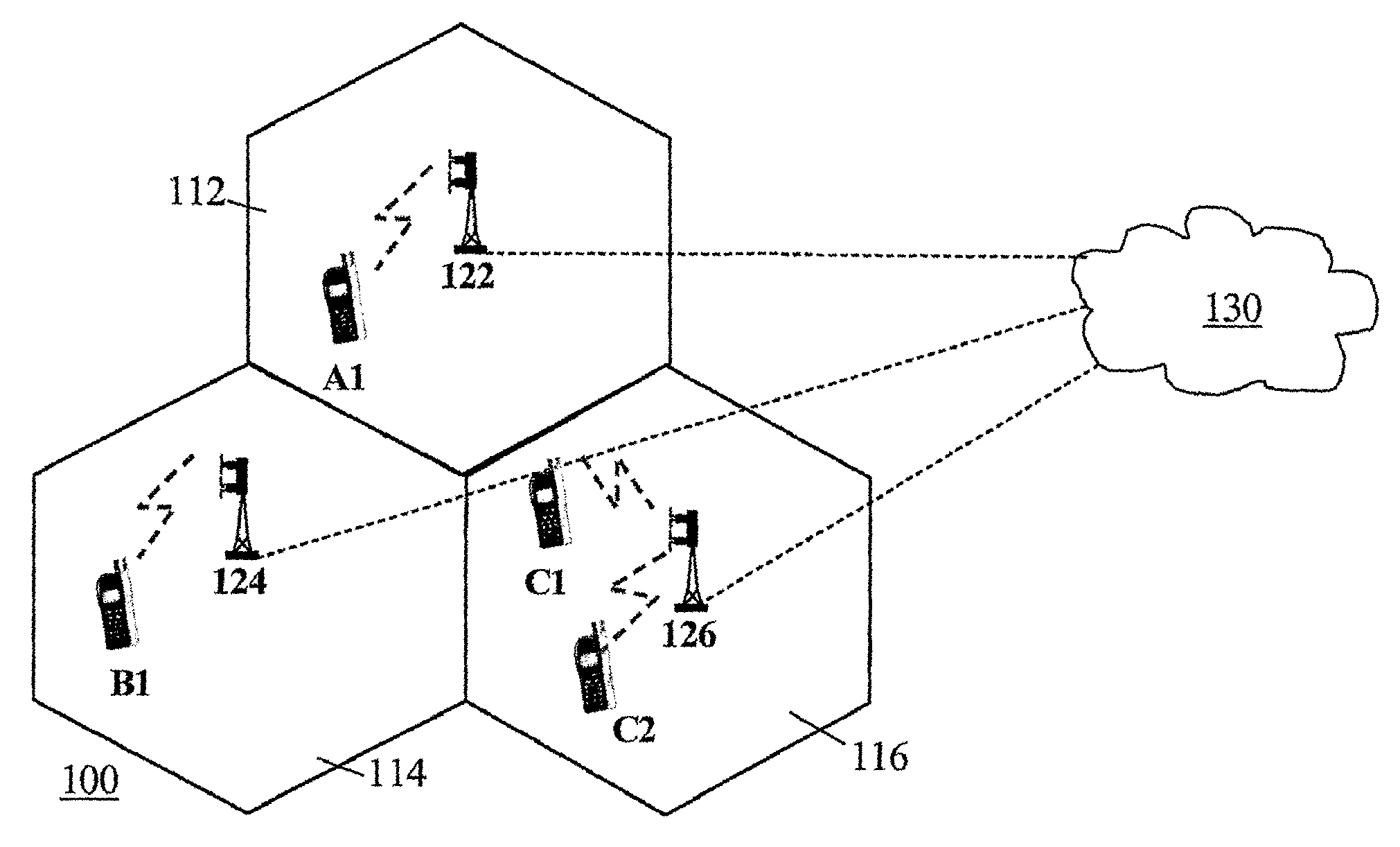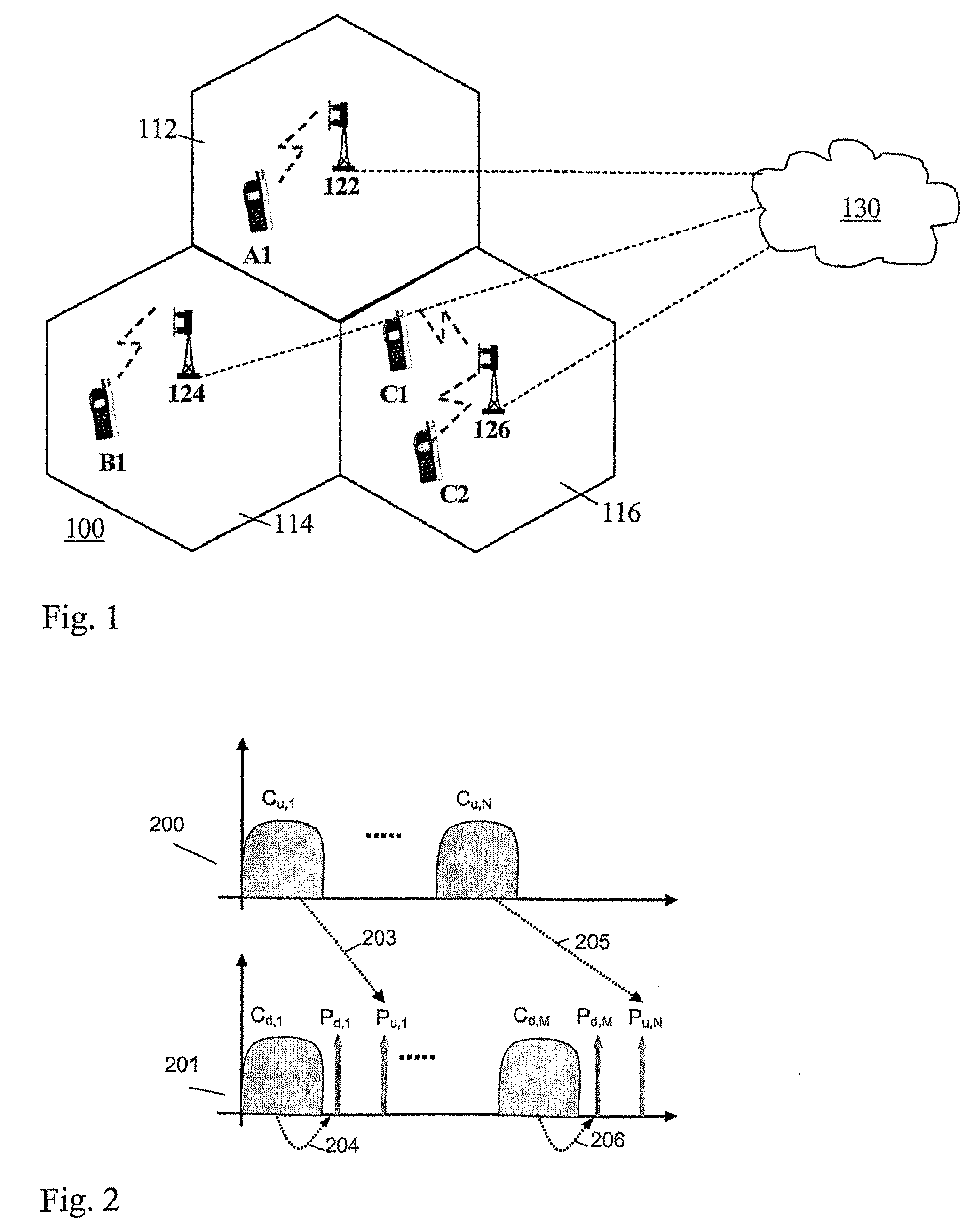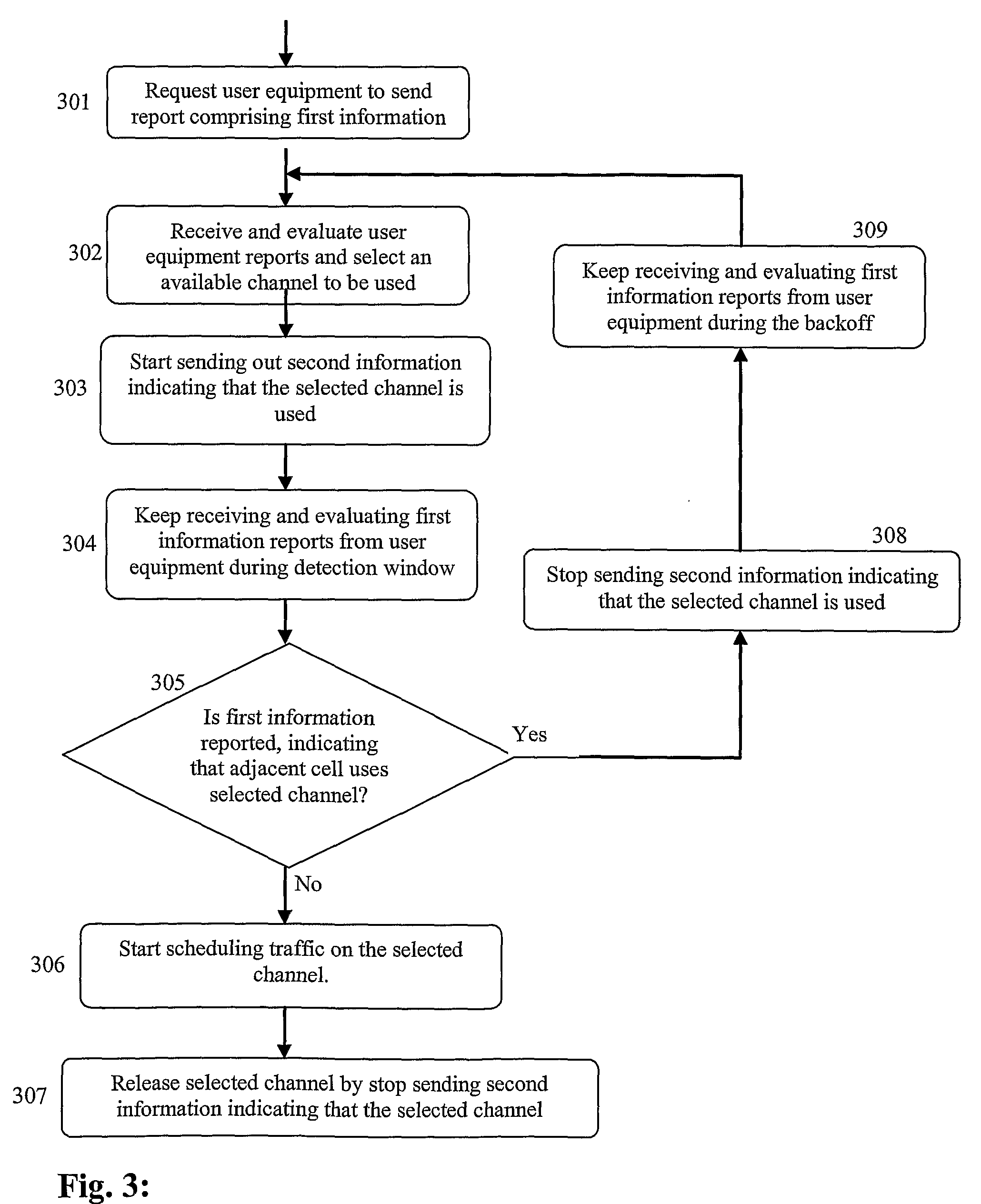Dynamic Inter-Cell Channel Sharing
a radio access network and dynamic technology, applied in the field of dynamic intercell channel sharing in the radio access network, can solve the problems of k-reuse system, inability to make the entire spectrum available, and address the issue, so as to achieve the effect of avoiding inefficiencies of static allocation and improving channel sharing efficiency
- Summary
- Abstract
- Description
- Claims
- Application Information
AI Technical Summary
Benefits of technology
Problems solved by technology
Method used
Image
Examples
Embodiment Construction
[0024]In cellular systems, frequency reuse is typically employed to avoid inter-cell interference. The frequency spectrum is divided into a number of frequency bands, where each cell gets assigned a subset of the available bands. In a more general interpretation of frequency reuse the radio channel to be shared between cells can be a code in case of Code Division Multiple Access (CDMA) or a time-frequency grid (chunk) in Orthogonal Frequency Division Multiplexing (OFDM). The term channel will be used to refer to such a piece of the radio channel in general.
[0025]FIG. 1 depicts a radio access network 100 comprising a number of cells of which cells 112, 114 and 116 are depicted in FIG. 1, and which radio access network 100 uses technologies such as e.g. Code Division Multiple Access (CDMA) or Orthogonal Frequency Division Multiplexing (OFDM).
[0026]The radio access network 100 further comprises, associated with each of the number of cells 112, 114 and 116, a respective access point 122...
PUM
 Login to View More
Login to View More Abstract
Description
Claims
Application Information
 Login to View More
Login to View More - R&D
- Intellectual Property
- Life Sciences
- Materials
- Tech Scout
- Unparalleled Data Quality
- Higher Quality Content
- 60% Fewer Hallucinations
Browse by: Latest US Patents, China's latest patents, Technical Efficacy Thesaurus, Application Domain, Technology Topic, Popular Technical Reports.
© 2025 PatSnap. All rights reserved.Legal|Privacy policy|Modern Slavery Act Transparency Statement|Sitemap|About US| Contact US: help@patsnap.com



